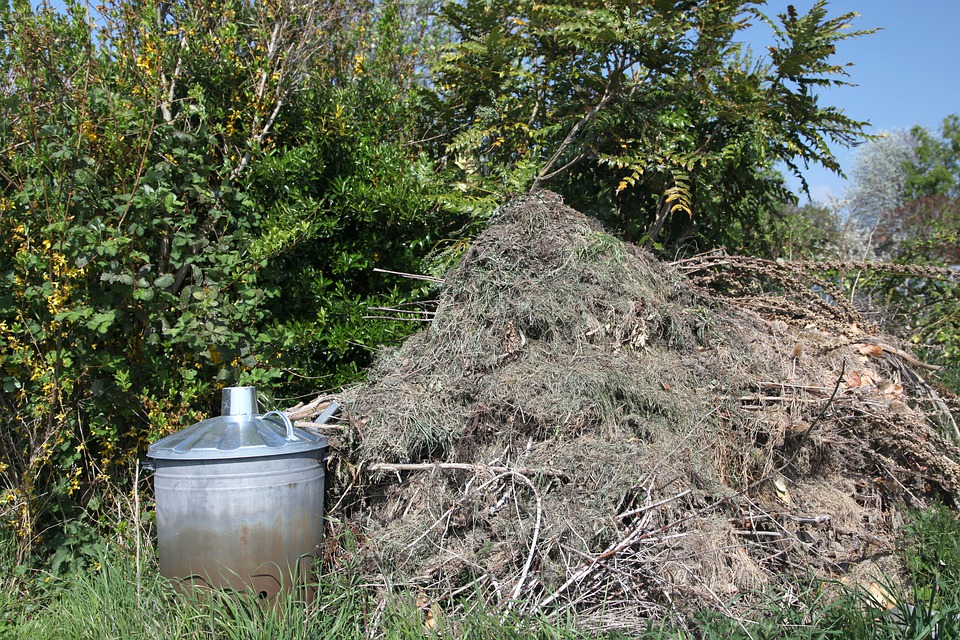Composting
The idea of composting may seem like a chore and turn you off from the idea, but it can be so much more than that! Composting is not only good for your garden, but it’s also fun too! You can make your own composting bin, or you can find many plans online to take part in this organic gardening hobby. Learn about the benefits of composting, how to make your own compost pile, what kinds of objects are best for composting-and much more!
What is Composting

Composting is a natural process that turns organic material, such as kitchen scraps and yard waste, into a nutrient-rich soil conditioner known as compost. This is achieved by the decomposition of organic matter over a period of time, with the help of microorganisms such as bacteria and fungi, as well as larger creatures like worms and insects.
The composting process involves gathering green waste (such as fruit and vegetable peels, coffee grounds, or grass clippings) which are high in nitrogen, and brown waste (such as leaves, straw, or paper) which are high in carbon. These materials are then mixed together in a compost bin or pile, and over time, they break down into compost through the activity of the microbes.
Benefits Of Composting
A Natural Cycle to Harness
Composting, a process that nature has fine-tuned over millennia, allows us to return nutrients to the earth in a manner that benefits not only the soil but our lives as well. It’s a humbling realization, understanding that we are participants in this endless cycle of growth, decay, and regeneration.
The Boost to Soil Health
Composting enriches your garden with nutrients that are otherwise hard to come by. As the composted organic matter decays, it releases these nutrients slowly, ensuring your plants receive a steady supply. There’s a reason why compost is often referred to as “black gold”; it’s a resource that boosts your garden’s productivity in a remarkable way.
Reducing Your Carbon Footprint
Taking up composting as a hobby can contribute significantly towards reducing greenhouse gas emissions. Organic matter decomposing in landfills generates methane, a potent greenhouse gas. By composting, you’re not only recycling nutrients but also cutting down on methane emissions, a twofold advantage for the environment.
Minimizing Household Waste
Composting offers an effective solution to the issue of household waste. With composting, kitchen scraps, garden clippings, and even certain types of paper waste can be put to use, reducing the amount of waste that ends up in landfills.
Healthier Produce
If you cultivate a vegetable garden, using compost instead of chemical fertilizers means your produce will not only be free of harmful substances but will likely be more nutritious and flavorful as well.
A Teaching Moment
Composting can be an invaluable tool for educating younger generations about the natural world. The composting process encapsulates the entire life cycle, providing a tangible example of nature’s cyclical patterns.
A Therapeutic Practice
Don’t overlook the therapeutic benefits of composting as a hobby. The physical activity involved in turning compost, coupled with the connection to the earth, can be a calming and centering practice.
How to Get Started with Composting
If you’re completely new at using a composter here are some tips:
Prepping Your Compost
Before you jump into using a composter, there are a few things you should know. First, you’ll need to prep your compost pile for several months before throwing in any scraps. Don’t use seeds or fresh cut grasses because they can attract unwanted pests and animals. You’ll also want to layer your leaves, twigs, or other carbon materials with nitrogen material such as spent plants or food waste. This will provide the best mix for composting quickly without attracting too many bugs and rodents.
Nitrogen Materials
Some examples of nitrogen materials are coffee grounds, eggshells, banana peels, lawn clippings & weeds that have gone to seed. There is another important mixture that you can throw into your compost pile to speed up the decomposing process: soil. Just a small handful will help to introduce microorganisms and bacteria, which make the whole thing work much better.
Aerating Your Compost
Aside from heat and moisture, oxygen is another key ingredient in any successful compost pile. Using a pitchfork or rake to mix the materials inside of the bin allows air pockets to come together with all of those little carbon bits and pieces that are just dying to break down. Then, let it sit for several weeks until the whole thing is ready to go!
Don’t Forget About Microbes!
One last thing you should never underestimate microbes. These tiny organisms play an important in breaking down organic matter and are needed to make composting work. So be sure to add a few scoops of your microbial-rich fertilizer from time to time and enjoy the reward of fertile, nutrient-packed soil in no time!
The Tools You Need For Successful Composting
Compost bins come in all shapes and sizes. Many people choose to make their own using either wire mesh or wooden materials such as pallets or cedar fence wood. However, if you’re not inclined towards DIY projects, there are premade boxes available from nurseries and garden supply stores.
Choosing the right bin can be a little confusing given all of the options out there. Start by brainstorming what you have available to work with, whether it’s an old garbage can or small container-whatever works! You may also want to consider your space restrictions because if it’s too big, you’ll lose interest.